|
Books Should Be Free Loyal Books Free Public Domain Audiobooks & eBook Downloads |
|
|
Books Should Be Free Loyal Books Free Public Domain Audiobooks & eBook Downloads |
|
Essay/Short Nonfiction |
|---|
|
Book type:
Sort by:
View by:
|
By: Joseph Conrad (1857-1924) | |
|---|---|
 The Mirror of the Sea
The Mirror of the Sea
The Mirror of the Sea is a collection of autobiographical essays first published in various magazines 1904-6. Conrad early in his life earned his bread as a Master Mariner in sailing ships. In his Author’s Note to this work, Conrad states,”Beyond the line of the sea horizon the world for me did not exist….Within these pages I make a full confession not of my sins but of my emotions. It is the best tribute my piety can offer to the ultimate shapers of my character, convictions, and, in a sense, destiny—to the imperishable sea, to the ships that are no more, and to the simple men who have had their day.” | |
By: Joseph Lister (1827-1912) | |
|---|---|
 On the Antiseptic Principle of the Practice of Surgery
On the Antiseptic Principle of the Practice of Surgery
Joseph Lister was born near London in 1827. He studied medicine at the University of London and pursued a career as a surgeon in Scotland. He became professor of Surgery in Glasgow and later (1877) at Kings College Hospital, in London. Lister’s contribution to the advancement of surgery cannot be overestimated. Before his work on antisepsis, wounds were often left open to heal, leading to long recoveries, unsightly scarring, and not infrequently amputation or death due to infection. Lister’s work enabled more wounds to be closed primarily with sutures, drastically reducing healing time, scarring, amputations, and deaths due to infection... | |
By: Joseph Trienens (b. 1863) | |
|---|---|
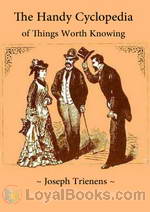 The Handy Cyclopedia of Things Worth Knowing
The Handy Cyclopedia of Things Worth Knowing
Written in 1910, this “cyclopedia” is full of information that was quite useful at the time. A hundred years later, its text is more humorous than practical — although some advice never goes out of style. | |
By: Karl Marx (1818-1883) | |
|---|---|
 Selected Essays
Selected Essays
| |
 Revolution and Counter-Revolution, or: Germany in 1848
Revolution and Counter-Revolution, or: Germany in 1848
Revolution and Counter-Revolution is an account of what happened in Prussia, Austria and other German states during 1848, describing the impact on both middle-class and working-class aspirations and on the idea of German unification. Events in Austria and Prussia are discussed, along with the role of the Poles and Czechs and Panslavism, which Engels was against. | |
By: Kate M. Foley | |
|---|---|
 Five Lectures on Blindness
Five Lectures on Blindness
The [five] lectures were written primarily to be delivered at the summer sessions of the University of California, at Berkeley and at Los Angeles, in the summer of 1918. . . they are the outgrowth of almost a quarter of a century spent in work for the blind, and were written from the standpoint of a blind person, seeking to better the condition of the blind. They were addressed not to the blind, but to the seeing public, for the benefit that will accrue to the blind from a better understanding of their problems. (Extract from the Forward by Milton J. Ferguson) | |
By: Kenneth Grahame (1859-1932) | |
|---|---|
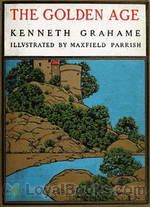 The Golden Age
The Golden Age
If you've loved and cherished The Wind in The Willows, you'll be delighted to read The Golden Age. In this book of reminiscences by Kenneth Grahame, the much loved creator of Winnie The Pooh, readers are granted an insight into the writer's childhood. The opening lines of the Prologue provide a poignant reminder of Grahame's childhood. When he was just five, his mother died in childbirth and his father who had a long standing problem with alcoholism consigned his four children, including the newborn baby, to the care of their grandmother in Berkshire... | |
By: L. (Lizzy) Lind-af-Hageby (1878-1963) | |
|---|---|
 Mountain Meditations and some subjects of the day and the war
Mountain Meditations and some subjects of the day and the war
| |
By: Lafcadio Hearn (1850-1904) | |
|---|---|
 In Ghostly Japan
In Ghostly Japan
This collection of 14 stories collected by Lafcadio Hearn, contains Japanese ghost stories, but also several non-fiction pieces. Hearn tries to give a glimpse into the customs of the Japanese, by giving examples of Buddhist Proverbs and explaining the use of incense and the nation wide fascination with poetry. Furthermore, he has again translated several hair-rising ghost stories, like "A Passional Karma" about the truly undying love of a young couple. | |
 Kokoro: Hints and Echoes of Japanese Inner Life
Kokoro: Hints and Echoes of Japanese Inner Life
In an introductory paragraph, Lafcadio Hearn declares his intention: "The papers composing this volume treat of the inner rather than of the outer life of Japan, for which reason they have been grouped under the title Kokoro (heart). Written with the above character, this word signifies also mind, in the emotional sense; spirit; courage; resolve; sentiment; affection; and inner meaning, just as we say in English, "the heart of things."" The result is a highly eclectic collection of stories, diary... | |
 Exotics and Retrospectives
Exotics and Retrospectives
Lafcadio Hearn, born 1850 in Greece, went to Japan when he was 40 years old and became a Japanese citizen only 6 years later. His writings about Japan from the beginning of the Meiji era, when the country was just opening to the West, remain among the most important explanations of Japanese culture. This book contains in the first part, "Exotics", his observations of and personal insights into Japan. For example, Fuji no Yama tells about him climbing the highest mountain in Japan; and A Question in the Zen Texts, Literature of the Dead, and Of Moon Desire try to explain Buddhist teachings... | |
 Gleanings in Buddha Fields
Gleanings in Buddha Fields
Lafcadio Hearn was one of the first Westerners to live in Japan during the early Meiji era, and a prolific writer. Although chiefly known for his collections of Japanese ghost stories , he also wrote many non-fiction essays about his life in Japan. This book contains 11 essays covering a variety of topics. For example, Hearn writes about his visits to Kyoto and Osaka, Japanese art, as well as Buddhism and Nirvana. Prooflisteners for this book were Isana and Margot. | |
By: Leo Tolstoy (1828-1910) | |
|---|---|
 Tolstoy on Shakespeare
Tolstoy on Shakespeare
This book contains a critical essay on Shakespeare by Leo Tolstoy. It is followed by another essay named "Shakespeare's attitude to the working classes" by Ernest Crosby and extracts of a letter by George Bernard Shaw. | |
By: Lev Shestov (1866-1938) | |
|---|---|
 Anton Tchekhov: and other essays
Anton Tchekhov: and other essays
This book was called Nachala i Kontzy when first published in 1908 in Russian and has been titled Anton Tchekhov and other essays as well as Penultimate Words in English when published in 1916. Lev Shestov, like Soren Kierkegaard before him, liked to ask questions. He asks if its possible to disentangle the hidden meaning of Tchekhov's works. If Dostoevsky is doomed eternally to be 'on the eve'. What if every possibility should have been exhausted, and endless repetition should begin? He discusses writers and philosophers such as Schopenhauer, Ibsen, Dostoevsky, Kant, and the ancient Greek philosophers in this book... | |
By: Linnean Society of London | |
|---|---|
 Journal of the Proceedings of the Linnean Society - Vol. 3 Zoology
Journal of the Proceedings of the Linnean Society - Vol. 3 Zoology
| |
By: Lloyd Eshbach (1910-2003) | |
|---|---|
 The Gray Plague
The Gray Plague
End of the world sci-fi tale borrows heavily from H.G. Wells' WOTW and In The Days of the Comet -- looks like fun ! | |
By: Logan Pearsall Smith (1865-1946) | |
|---|---|
 Trivia (1917) And More Trivia (1921)
Trivia (1917) And More Trivia (1921)
Logan Pearsall Smith was an American-born British essayist who was known for his epigrams and aphorisms, often humorous. This recording is of two of his collections of these bon mots. For example: “These pieces of moral prose have been written, dear Reader, by a large Carnivorous Mammal, belonging to that suborder of the Animal Kingdom which includes also the Orang-outang, the tusked Gorilla, the Baboon with his bright blue and scarlet bottom, and the long-eared Chimpanzee.” | |
By: Lord Redesdale (1837-1916) | |
|---|---|
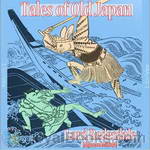 Tales of Old Japan
Tales of Old Japan
Tales of Old Japan by Lord Redesdale is a collection of short stories focusing on Japanese life of the Edo period (1603 - 1868). It contains a number of classic Japanese stories, fairy tales, and other folklore; as well as Japanese sermons and non-fiction pieces on special ceremonies in Japanese life, such as marriage and harakiri, as observed by Lord Redesdale. The best know story of these is "The Forty-seven Ronins" a true account of samurai revenge as it happened at the beginning of 18th century Japan... | |
By: Louis Becke (1855-1913) | |
|---|---|
 The Beginning Of The Sea Story Of Australia 1901
The Beginning Of The Sea Story Of Australia 1901
| |
 The South Seaman An Incident In The Sea Story Of Australia - 1901
The South Seaman An Incident In The Sea Story Of Australia - 1901
| |
 The Americans In The South Seas 1901
The Americans In The South Seas 1901
| |
By: Louisa Lawson (1848-1920) | |
|---|---|
 Selected Lead Articles from "THE DAWN"
Selected Lead Articles from "THE DAWN"
Louisa Lawson, the mother of Australian writer Henry Lawson, was the founder, publisher and editor of an early feminist journal in Sydney named “The Dawn”. From 1888 onwards, it played no small part in the gaining of the vote for Australian women in South Australia , Western Australia , New South Wales , Commonwealth , Tasmania , Queensland , and Victoria . Since the success of the “Digitise The Dawn” project, a number of Louisa Lawson’s lead articles from the journal are available PD online, including the one written in defiance of the male-dominated New South Wales Typographical Association... | |
By: Louise Imogen Guiney (1861-1920) | |
|---|---|
 Goose-Quill Papers
Goose-Quill Papers
Louise Imogen Guiney, and American poet and essayist, here presents twenty essays with her characteristic wit and poetic flair and often a touch of satire on sometimes common topics such as the apple, the moon, mathematics and the garret, even the provocative "On Teaching One's Grandmother how to Suck Eggs." - Summary by Larry Wilson | |
By: Lucius Annaeus Seneca (4-65) | |
|---|---|
 Moral Letters, Vol. I
Moral Letters, Vol. I
"Among the personalities of the early Roman Empire there are few who offer to the readers of to-day such dramatic interest as does Lucius Annaeus Seneca, the author of the Epistles which are translated in this volume. ... In these letters, it is impossible to ignore the advance from a somewhat stiff and Ciceronian point of view into the attractive and debatable land of what one may fairly call modern ideas. The style of the Epistles is bold, and so is the thought." (from the Introduction) | |
 Moral Letters, Vol. II
Moral Letters, Vol. II
This is the second volume of the Letters, Epistles LXVI-XCII. Among the personalities of the early Roman Empire there are few who offer to the readers of to-day such dramatic interest as does Lucius Annaeus Seneca, the author of the Epistles. These letters, written by Seneca towards the end of his life, are all addressed to his friend Lucilius, who, at the time when these letters were written, was a procurator in Sicily. The form of this work, as Bacon says, is a collection of essays rather than of letters. Summary paraphrased from the Introduction in Volume 1 by Suprad. | |
 Moral letters to Lucilius (Epistulae morales ad Lucilium)
Moral letters to Lucilius (Epistulae morales ad Lucilium)
Seneca the Younger’s letters to his friend, Lucilius Junior, appear to have been written with a broad audience in mind. These letters introduce major themes of Stoic philosophy and have been a source of inspiration and comfort for readers throughout the centuries. - Summary by jvanstan | |
By: Lucius Mestrius Plutarchus (c. 46 - c. 120) | |
|---|---|
 Morals (Moralia), Book 1
Morals (Moralia), Book 1
The Moralia (or The morals or Matters relating to customs and mores) is a work by the 1st-century Greek scholar Plutarch of Chaeronea. It is a collection of 78 essays and transcribed speeches that give an insight into Roman and Greek life. Extremely popular for centuries, Plutarch's Morals have been read and imitated by many generations of Europeans, including Montaigne and the Renaissance Humanists and Enlightenment philosophers. Some of the most famous chapters on history are "On the Fortune or... | |
By: Lydia Maria Child (1802-1880) | |
|---|---|
 The Freedmen's Book
The Freedmen's Book
Lydia Maria Child, an American abolitionist, compiled this collection of short stories and poems by former slaves and noted activists as an inspiration to freed slaves. In her dedication to the freedmen, she urges those who can read to read these stories aloud to others to share the strength, courage and accomplishments of colored men and women. In that spirit, this recording aims to gives that voice a permanent record. As in the original text, the names of the colored authors are marked with an "x". | |
By: M. H. (Marion Harry) Spielmann (1858-1948) | |
|---|---|
 The History of "Punch"
The History of "Punch"
| |
By: Mabel E. Wotton (1863-1927) | |
|---|---|
 Word Portraits of Famous Writers
Word Portraits of Famous Writers
Mabel Elizabeth Wotton, an author herself, moved in the literary circles of the late nineteenth century establishing many close friendships, She presents for us here, not literary criticism nor biographical sketches, but "word portraits," shore vignettes of a persons physical appearance and elements of behavior or personality. These are all drawn from many sources -- biographies, newspapers, or personal friends of the authors. Some descriptions are based on paintings or drawings, but the majority are derived from personal acquaintance. Thus, we have a unique view of these famous artists that we seldom read. - Summary by Larry Wilson | |
By: Marcus Tullius Cicero | |
|---|---|
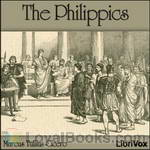 The Philippics
The Philippics
A philippic is a fiery, damning speech delivered to condemn a particular political actor. The term originates with Demosthenes, who delivered an attack on Philip II of Macedon in the 4th century BCE.Cicero consciously modeled his own attacks on Mark Antony, in 44 BC and 43 BC, on Demosthenes’s speeches, and if the correspondence between M. Brutus and Cicero are genuine [ad Brut. ii 3.4, ii 4.2], at least the fifth and seventh speeches were referred to as the Philippics in Cicero’s time. They were also called the Antonian Orations by Aulus Gellius... | |
By: Margaret Fuller (1810-1850) | |
|---|---|
 Woman in the Nineteenth Century and Kindred Papers Relating to the Sphere, Condition, and Duties of Women
Woman in the Nineteenth Century and Kindred Papers Relating to the Sphere, Condition, and Duties of Women
Margaret Fuller (1810-1850) was an American feminist, writer, and intellectual associated with the Transcendentalist movement. Her book Woman in the Nineteenth Century (1845) is considered the first major feminist work in the United States. Her life was short but full. She became the first editor of the transcendentalist journal The Dial in 1840, before joining the staff of the New York Tribune under Horace Greeley in 1844. By the time she was in her 30s, Fuller had earned a reputation as the best-read person in New England, male or female, and became the first woman allowed to use the library at Harvard College... | |
By: Marian Storm (1857-1926) | |
|---|---|
 Minstrel Weather
Minstrel Weather
A series of poetically written meditations on the seasons and other nature subjects. Or “ …Minstrel Weather, a series of open-air vignettes which circle the zodiac with the attentive eye of a naturalist and the enchanted ardor of a poet.” - Summary by Christopher Morley, Modern Essays, 1921, and David Wales | |
By: Mark Twain (1835-1910) | |
|---|---|
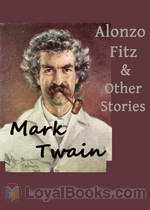 Alonso Fitz and Other Stories
Alonso Fitz and Other Stories
A collection of Twain short stories including:The Loves Of Alonzo Fitz Clarence And Rosannah EtheltonOn The Decay Of The Art Of LyingAbout Magnanimous-Incident Literature The Grateful Poodle The Benevolent Author The Grateful HusbandPunch, Brothers, PunchThe Great Revolution In PitcairnThe Canvasser's TaleAn Encounter With An InterviewerParis NotesLegend Of Sagenfeld, In GermanySpeech On The BabiesSpeech On The WeatherConcerning The American LanguageRogers | |
 Newspaper Articles by Mark Twain
Newspaper Articles by Mark Twain
This is a collection of newspaper articles written by Samuel Clemens, for various newspapers, between 1862 and 1881. After Feb 3rd 1863, he began using the pen name Mark Twain. This compilation is the work of Project Gutenberg and contains articles from TERRITORIAL ENTERPRISE, THE SAN FRANCISCO DAILY MORNING CALL, THE SACRAMENTO DAILY UNION, DAILY HAWAIIAN HERALD, ALTA CALIFORNIA, THE CHICAGO REPUBLICAN, and THE GALAXY. (Introduction by John Greenman) | |
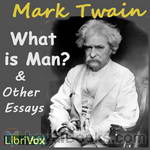 What is Man? and Other Essays
What is Man? and Other Essays
"What Is Man?", published by Mark Twain in 1906, is a dialogue between a young man and an older man jaded to the world. It involves ideas of destiny and free will, as well as of psychological egoism. The Old Man asserted that the human being is merely a machine, and nothing more. The Young Man objects, and asks him to go into particulars and furnish his reasons for his position. This collection of short stories covers a wide range of Twain's interests: the serious, the political and the ironically humorous. | |
 Fenimore Cooper's Literary Offences
Fenimore Cooper's Literary Offences
This is Mark Twain's vicious and amusing review of Fenimore Cooper's literary art. It is still read widely in academic circles. Twain's essay, Fenimore Cooper's Literary Offenses (often spelled "Offences") (1895), particularly criticized The Deerslayer and The Pathfinder. Twain wrote at the beginning of the essay: 'In one place in Deerslayer, and in the restricted space of two-thirds of a page, Cooper has scored 114 offenses against literary art out of a possible 115. It breaks the record.' Twain listed 19 rules 'governing literary art in domain of romantic fiction', 18 of which Cooper violates in The Deerslayer. (Introduction by Wikipedia and John Greenman) | |
 The Curious Republic of Gondour and Other Whimsical Sketches
The Curious Republic of Gondour and Other Whimsical Sketches
As the title reveals, these stories are a collection of some of Mark Twain's more fanciful and eccentric works. They run the gamut from political commentary to our species' need to "be remembered" somehow. Taken as a whole the stories are "whimsical". Taken individually, they speak the truth in different ways. (Introduction by John Greenman) | |
 In Defense of Harriet Shelley
In Defense of Harriet Shelley
Mark Twain pulls no punches while exposing the "real" Percy Shelley in this scathing condemnation of Edward Dowden's "Life of Shelley". Even though, as Twain writes, "Shelley's life has the one indelible blot upon it, but is otherwise worshipfully noble and beautiful", Twain shows how Shelley's extra-marital conduct might easily be seen to have been the cause of his wife Harriet's suicide. (Introduction by John Greenman) | |
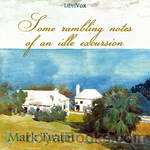 Some Rambling Notes of an Idle Excursion
Some Rambling Notes of an Idle Excursion
Written for the Atlantic magazine in 1877, this is a collection of stories about a trip Mark Twain made with some friends to Bermuda. It contains fascinating descriptions of Bermuda the island, and some of its people as well as an explanation of why Bermuda's houses are "so white". | |
 Anti-imperialist writings
Anti-imperialist writings
This audiobook is a collection of Mark Twain's anti-imperialist writings (newspaper articles, interviews, speeches, letters, essays and pamphlets). | |
 How to Tell a Story, and Other Essays
How to Tell a Story, and Other Essays
In his inimitable way, Mark Twain gives sound advice about how to tell a story, then lets us in on some curious incidents he experienced, and finishes with a trip that proves life-changing. | |
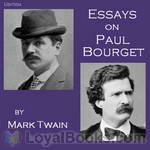 Essays on Paul Bourget
Essays on Paul Bourget
Collection of short essays concerning French novelist and critic Paul Bourget. Included: "What Paul Bourget Thinks of Us" and "A Little Note to M. Paul Bourget". | |
 Mark Twain's Speeches
Mark Twain's Speeches
Spanning the time between 1872 and the year before he died, this collection of after-dinner speeches, random thoughts to "the press", etc. clearly documents, once again, the truly eclectic mind of Samuel Clemens. It also demonstrates how he dealt with adulation, compliments and notoriety...head on! This collection is a treasure-trove of Twain sayings, witticisms and pronouncements on a huge galaxy of issues and concerns in his life. | |
 On the Decay of the Art of Lying
On the Decay of the Art of Lying
| |
 Mark Twain's Journal Writings, Volume 1
Mark Twain's Journal Writings, Volume 1
Volume 1 contains these 12 essays: 1.) "Americans on a Visit to the Emperor of Russia." 2.) "The Austrian Edison keeping school again" 3.) "The Canvasser's tale." 4.) "The Czar's Soliloquy." 5.) "English as She is Taught." 6.) "Grasses in the South." 7.) "Hawaii." 8.) "A Helpless Situation." 9.) "How I Escaped being Killed in a Duel." 10.) "Important to Whom it may Concern." 11.) "The Austrian Edison Keeping School Again" 12.) "Jim's Investments, and King Sollermun." | |
 Europe and Elsewhere
Europe and Elsewhere
This collection of articles came from Mark Twain's travels and experiences abroad. While many had been previously published, there also were many that had never before seen the light of day...which one reviewer said had never been Twain's intent for them, having consigned them to obscurity. With introductory essays by Brander Matthews and Albert Bigelow Paine, the book paints a clear picture of the complexity and wide variety of Samuel L. Clemens' thinking, where it originated and how it developed. | |
 Christian Science
Christian Science
Christian Science is a 1907 collection of essays Mark Twain wrote about Christian Science, beginning with an article that was published in Cosmopolitan in 1899. Although Twain was interested in mental healing and the ideas behind Christian Science, he was hostile towards its founder, Mary Baker Eddy . He called her, according to American writer Caroline Fraser, "[g]rasping, sordid, penurious, famishing for everything she sees—money, power, glory—vain, untruthful, jealous, despotic, arrogant, insolent, pitiless where thinkers and hypnotists are concerned, illiterate, shallow, incapable of reasoning outside of commercial lines, immeasurably selfish... | |
 Mark Twain's Letters from Hawaii
Mark Twain's Letters from Hawaii
By the time Mark Twain worked as a roving reporter for the Sacramento Union, he had held positions with other newspapers in Nevada and California. However, his assignment in 1866 to visit and report on the Sandwich Islands, changed his life. These 25 "letters" from Hawaii gave him an international "scoop" and opened the door for a lifetime of speaking engagements. “I went to Maui to stay a week and remained five. I had a jolly time. I would not have fooled away any of it writing letters under any consideration whatever.” –Mark Twain - Summary by John Greenman and Wikipedia | |
By: Martin Farquhar Tupper (1810-1889) | |
|---|---|
 The Complete Prose Works of Martin Farquhar Tupper
The Complete Prose Works of Martin Farquhar Tupper
| |
 An Author's Mind : The Book of Title-pages
An Author's Mind : The Book of Title-pages
| |
By: Martyn Johnson | |
|---|---|
 Editorials from The Dial magazine, Volume 66
Editorials from The Dial magazine, Volume 66
Editorials published in Volume 66 of The Dial magazine, a fortnightly political and literary review. The source available to us features issues from January 11 to June 28, 1919. This volume illustrates the pacifist and socialist viewpoint of Martyn Johnson and the magazine's staff. The magazine experience financial troubles in 1919 and was sold later that year. The magazine was re-directed by its new investors in a direction that was essentially literary in nature and it is this 're-creation' of the magazine that is best known. | |
By: Mary Elizabeth Brown (1842-1918) | |
|---|---|
 Dedications
Dedications
Dedications is an anthology of the forms used from the earliest days of book-making to the present time. My purpose in the following anthology of dedications has been to make a representative, rather than an exhaustive collection. My first idea was to take only beautiful dedications, and above all those which showed thought and originality. I next sought those which were quaint and curious, grave and gay, and then wandering through the wide field of English literature, tried to have each section of it represented... | |
By: Mary H. Northend (1850-1926) | |
|---|---|
 Remodeled Farmhouses
Remodeled Farmhouses
"There is a certain fascination connected with the remodeling of a farmhouse. Its low, raftered interior, its weather-beaten exterior, never fail to appeal. Types vary with the period in which they were built, but all are of interest. In this collection, which has been pictured with great care, pains have been taken to show as many different types as possible, so that the student will be able to find numerous interesting details that can be incorporated into his contemplated remodeling." [opening lines of Preface] | |
By: Matthew Arnold (1822-1888) | |
|---|---|
 Culture and Anarchy
Culture and Anarchy
Culture and Anarchy is a series of periodical essays by Matthew Arnold, first published in Cornhill Magazine 1867-68 and collected as a book in 1869. The preface was added in 1875. Arnold's famous piece of writing on culture established his High Victorian cultural agenda which remained dominant in debate from the 1860s until the 1950s. According to his view advanced in the book, "Culture [...] is a study of perfection". He further wrote that: "[Culture] seeks to do away with classes; to make the best that has been thought and known in the world current everywhere; to make all men live in an atmosphere of sweetness and light [... | |
By: Maurice Henry Hewlett (1861-1923) | |
|---|---|
 In a Green Shade A Country Commentary
In a Green Shade A Country Commentary
| |
By: Maurice Maeterlinck (1862-1949) | |
|---|---|
 The Buried Temple
The Buried Temple
| |
By: Max Beerbohm (1872-1956) | |
|---|---|
 The Works of Max Beerbohm
The Works of Max Beerbohm
| |
By: Michel de Montaigne (1533-1592) | |
|---|---|
 Literary and Philosophical Essays: French, German and Italian
Literary and Philosophical Essays: French, German and Italian
| |
By: Michel Eyquem de Montaigne (1533-1592) | |
|---|---|
 Essays, Book 1
Essays, Book 1
Michel Eyquem de Montaigne is one of the most influential writers of the French Renaissance, known for popularising the essay as a literary genre and is popularly thought of as the father of Modern Skepticism. He became famous for his effortless ability to merge serious intellectual speculation with casual anecdotes and autobiography—and his massive volume Essais (translated literally as "Attempts") contains, to this day, some of the most widely influential essays ever written. | |
By: Mírzá Abu’l-Fadl Gulpáygání (1844-1914) | |
|---|---|
 The Brilliant Proof (Burhäne Lämé) in reply to an attack upon the Bahai Revelation by Peter Z. Easton
The Brilliant Proof (Burhäne Lämé) in reply to an attack upon the Bahai Revelation by Peter Z. Easton
“In these days,” writes the renowned Bahá’í scholar, Mírzá Abu’l-Fadl, “which are the latter days of 1911, A. D. and the early days of 1330 A. H., I have seen a curious article which astonished me. What did I see? I find that one of the missionaries of the Protestant sect, who accounts himself among the learned men of the twentieth century, a helper of the pure religion of Christ and one of the civilized and cultured occidentals, by name, Peter Z. Easton, has been so provoked by jealousy... | |
By: Morley Roberts (1857-1942) | |
|---|---|
 A Tramp's Notebook
A Tramp's Notebook
| |
By: Murray Leinster (1896-1975) | |
|---|---|
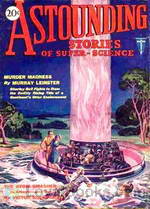 Murder Madness
Murder Madness
Murder Madness! Seven Secret Service men had completely disappeared. Another had been found a screaming, homicidal maniac, whose fingers writhed like snakes. So Bell, of the secret "Trade," plunges into South America after The Master--the mighty, unknown octopus of power whose diabolical poison threatens a continent! | |
By: Nathaniel Hawthorne (1804-1864) | |
|---|---|
 Dolliver Romance and Other Pieces
Dolliver Romance and Other Pieces
This post-humous collection of stories, sketches and essays by celebrated quintessential New England author Nathaniel Hawthorne gives us glimpses of the many different facets of Hawthorne's personality. The titular tale The Dolliver Romance was an unfinished manuscript that was edited and prepared for publication after Hawthorne's death and relates the story of an aged man with a small child in his care who swallows a magical tincture daily that rejuvenates his vitality, reversing the aging process... | |
By: National Geographic Society | |
|---|---|
 National Geographic Magazine Vol. 07 - 11. November 1896
National Geographic Magazine Vol. 07 - 11. November 1896
The National Geographic Magazine, an illustrated monthly, the November Number. It includes the following articles: * The Witwatersrand and the Revolt of the Uitlanders, by George F. Becker * The Economic Aspects of Soil Erosion by Dr N. S. Shaler * A Critical Period in South African History, by John Hyde * Geographical Notes - Asia | |
 National Geographic Magazine Vol. 07 - 06. June 1896
National Geographic Magazine Vol. 07 - 06. June 1896
The National Geographic Magazine, an illustrated monthly, the June Number. It includes the following articles: * The Seine, the Meuse, and the Moselle, by William M. Davis * Across the Gulf by rail to Key West, by Jefferson B. Browne * A geographical description of the British Islands, by W. M. Davis * The Mexican Census along with geographic literature, notes and miscellanea. | |
 National Geographic Magazine Vol. 07 - 02. February 1896
National Geographic Magazine Vol. 07 - 02. February 1896
The National Geographic Magazine, an illustrated monthly, the February Number. It includes the following articles: * Venezuela: Her Government, People, and Boundary, by William E. Curtis * The Panama Canal Route, by Robert T. Hill * The Tehuantepec Ship Railway, by Elmer L. Corthell * The Present State of the Nicaragua Canal, by Gen. A. W. Greely * Explorations by the Bureau of American Ethnology in 1895, by W. J. McGee * The Valley of the Orinoco, by T. H. Gignilliat * Yucatan in 1895 along with geographic literature and notes. | |
 National Geographic Magazine Vol. 07 - 05. May 1896
National Geographic Magazine Vol. 07 - 05. May 1896
The National Geographic Magazine, an illustrated monthly, the May Number. It includes the following articles: * Africa Since 1888, by Hon. Gardiner G. Hubbard, LL. D. * Fundamental Geographic Relation of the Three Americas, by Robert T. Hill * The Kansas River, by Arthur P. Davis * Annual Report of the Superintendent of the United States Coast and Geodetic Survey, by Herbert G. Ogden along with geographic literature, and a few miscellaneous notes. | |
By: New Zealand. General Assembly Library | |
|---|---|
 Report of the Chief Librarian for the Year 1924-25
Report of the Chief Librarian for the Year 1924-25
| |
By: New Zealand. National Library Service | |
|---|---|
 Report of the National Library Service for the Year Ended 31 March 1958
Report of the National Library Service for the Year Ended 31 March 1958
| |
By: Northern Nut Growers Association [Editor] | |
|---|---|
 Northern Nut Growers Association, report of the proceedings at the sixth annual meeting Rochester, New York, September 1 and 2, 1915
Northern Nut Growers Association, report of the proceedings at the sixth annual meeting Rochester, New York, September 1 and 2, 1915
| |
By: Olive Schreiner (1855-1920) | |
|---|---|
 Dream Life and Real Life; a little African story
Dream Life and Real Life; a little African story
| |
 Woman and War
Woman and War
Olive Schreiner was a South African writer born in 1855 to missionary parents in the Eastern Cape. She is credited with being the first Internationally famous South African Novelist. She was an extraordinary person and was one of the earliest campaigners for women's rights, including the right to equal pay for equal work, saying: "The fact that for equal work equally well performed by a man and by a woman it is ordained that the woman on the ground of her sex alone shall receive a less recompense is the nearest approach to a willful and unqualified "wrong" in the whole relation of woman to society today"... | |
By: Oliver Lodge (1851-1940) | |
|---|---|
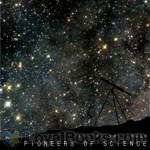 Pioneers of Science
Pioneers of Science
This book takes its origin in a course of lectures on the history and progress of Astronomy arranged for Sir Oliver Lodge in the year 1887. The first part of this book is devoted to the biographies and discoveries of well known astronomers like Copernicus, Brahe, Kepler, Galileo and Newton. In the second part, the biographies take a back seat, while scientific discoveries are discussed more extensively, like the discovery of Asteroids and Neptune, a treatise on the tides and others. | |
By: Oliver Wendell Holmes (1809-1894) | |
|---|---|
 Autocrat of the Breakfast Table
Autocrat of the Breakfast Table
| |
By: Oliver Wendell Holmes, Sr. (1809-1894) | |
|---|---|
 My Hunt After 'The Captain'
My Hunt After 'The Captain'
Holmes describes his frantic search through Civil War torn landscapes for his wounded son, the future Supreme Court Justice. Originally published in The Atlantic Magazine, 1862. Holmes, Sr. (1809 -1894) was an American physician, poet, professor, lecturer, and author. He was regarded by his peers as one of the best writers of the 19th century. His most famous prose works are the "Breakfast Table" series, which began with The Autocrat of the Breakfast Table (1858). He is also recognized as an important medical reformer. | |
By: Oscar Wilde (1854-1900) | |
|---|---|
 Reviews
Reviews
Wilde’s literary reputation has survived so much that I think it proof against any exhumation of articles which he or his admirers would have preferred to forget. As a matter of fact, I believe this volume will prove of unusual interest; some of the reviews are curiously prophetic; some are, of course, biassed by prejudice hostile or friendly; others are conceived in the author’s wittiest and happiest vein; only a few are colourless. And if, according to Lord Beaconsfield, the verdict of a continental nation may be regarded as that of posterity, Wilde is a much greater force in our literature than even friendly contemporaries ever supposed he would become... | |
 The Soul of Man
The Soul of Man
“(T)he past is what man should not have been. The present is what man ought not to be. The future is what artists are.”Published originally as “The Soul of Man Under Socialism,” this is not so much a work of sober political analysis; rather it can be summed up as a rhapsodic manifesto on behalf of the Individual. Socialism having deployed technology to liberate the whole of humanity from soul-destroying labour, the State obligingly withers away to allow the free development of a joyful, anarchic hedonism... | |
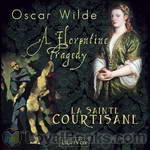 A Florentine Tragedy and La Sainte Courtisane
A Florentine Tragedy and La Sainte Courtisane
Two short fragments: an unfinished and a lost play. A Florentine Tragedy, left in a taxi (not a handbag), is Wilde’s most successful attempt at tragedy – intense and domestic, with surprising depth of characterisation. It was adapted into an opera by the Austrian composer Alexander Zemlinsky in 1917. La Sainte Courtisane, or The Woman Covered in Jewels explores one of Wilde’s great idées fixes: the paradox of religious hedonism, pagan piety. Both plays, Wildean to their core, revel in the profound sadness that is the fruit of the conflict between fidelity and forbidden love... | |
 Essays and Lectures
Essays and Lectures
| |
 Selected Prose of Oscar Wilde
Selected Prose of Oscar Wilde
| |
 Shorter Prose Pieces
Shorter Prose Pieces
| |
 Letters of Oscar Wilde, Volume 1 (1868-1890)
Letters of Oscar Wilde, Volume 1 (1868-1890)
This first collection of the correspondence of Oscar Wilde begins with the Irish playwright's earliest extant letter, thanking his mother for the hamper she had sent to him at school. It includes letters about his travels in Italy, his American lecture tour, the staging of his first play , arrangements for the publication of a friend's poetry collection, and exchanges in the press with artist James McNeill Whistler. The letters, some of which have been excerpted or redacted, are sourced from auction catalogues, newspapers, biographies, and other texts in the public domain... | |
 Letters of Oscar Wilde, Volume 2 (1890-1895)
Letters of Oscar Wilde, Volume 2 (1890-1895)
This second collection of the correspondence of Oscar Wilde includes letters written when the Irish playwright was at the height of his success. Wilde defends several of his works from criticism and even censorship, and writes "prose poems" to his lover, Lord Alfred Douglas, that will eventually be read out in court. The letters, some of which have been excerpted or redacted, are sourced from auction catalogues, newspapers, biographies, and other texts in the public domain. For a complete collection of Wilde's letters, please see "The Complete Letters of Oscar Wilde," edited by Merlin Holland and Rupert Hart-Davis. - Summary by Rob Marland | |
 Letters of Oscar Wilde, Volume 4 (1897-1898)
Letters of Oscar Wilde, Volume 4 (1897-1898)
This fourth collection of the correspondence of Oscar Wilde includes the letters Wilde wrote while living in Berneval, in the months after his release from prison, and in Naples, where he shared a villa with his former lover, Lord Alfred Douglas. In a long letter to the editor of the Daily Chronicle, Wilde describes the cruelties of prison life. At this time Wilde was writing The Ballad of Reading Gaol, and the poem is a frequent topic in his letters to his friend, Robert Ross, and publisher, Leonard Smithers... | |
 Letters of Oscar Wilde, Volume 5 (1898-1900)
Letters of Oscar Wilde, Volume 5 (1898-1900)
This fifth and final collection of the correspondence of Oscar Wilde includes many letters to his friend, Robert Ross, and a long letter about prison reform to the editor of the Daily Chronicle. For most of the last three years of his life Wilde lived in Paris, but his letters also describe visits to Switzerland and Italy. The collection ends with one of Wilde's last surviving letters, which he wrote from his deathbed to beg a friend for money to pay his medical bills. The letters, some of which have been excerpted or redacted, are sourced from auction catalogues, biographies, collections of letters to Ross, and other texts in the public domain... | |
By: Patrick Henry (1736-1799) | |
|---|---|
 The Anti-Federalist Papers
The Anti-Federalist Papers
During the period of debate over the ratification of the Constitution, numerous independent local speeches and articles were published all across the country. Initially, many of the articles in opposition were written under pseudonyms, such as “Brutus”, “Centinel”, and “Federal Farmer”. Eventually, famous revolutionary figures such as Patrick Henry came out publicly against the Constitution. They argued that the strong national government proposed by the Federalists was a threat to the rights of individuals and that the President would become a king... | |
 Give Me Liberty or Give Me Death
Give Me Liberty or Give Me Death
This speech was given March 23, 1775, at St. John’s Church in Richmond, Virginia, and is credited with having singlehandedly convinced the Virginia House of Burgesses to pass a resolution delivering the Virginia troops to the Revolutionary War. In attendance were Thomas Jefferson and George Washington. Reportedly, the crowd, upon hearing the speech, jumped up and shouted, “To Arms! To Arms!” | |
By: Philander Misaurus | |
|---|---|
 Honour of the Gout
Honour of the Gout
This droll and 'enflammatory' pamphelet doth be a grondebreaking worke of musing upon a great aflicktion of Man, upon the better nature of that aflicktion, and upon the vain and mischievous cheats who affeckt to cure it. The gauntlet here so-toss'd by Philander Misaurus was later pick'd up by surgeon John Marten in his rejoinder, titled by the name–"The Dishonour of the Gout". Which seeketh to shew all minds swayed by Philander's prettie words that—indubitably—Gout is misfortune. - Summary by Alasdair | |